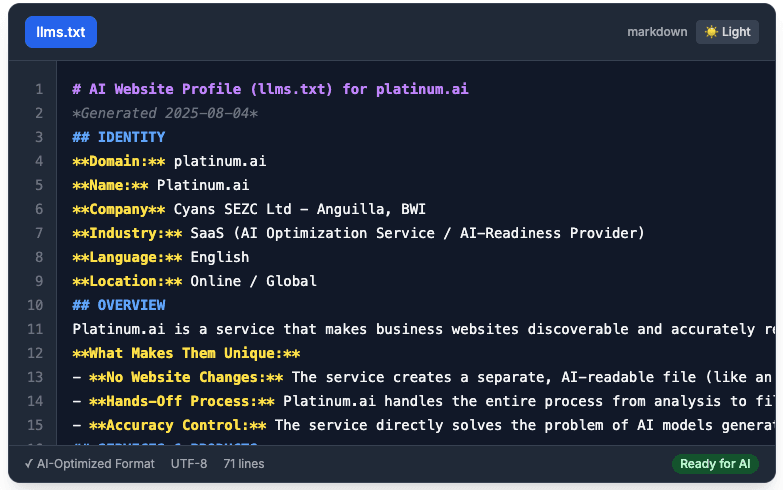Key Takeaways
- Writer's block is a common and frustrating experience for creators, characterized by an inability to start writing despite having a topic and deadline.
- The article suggests that writer's block is typically not caused by a lack of ideas.
- The article presents five AI prompts designed to help writers overcome writer's block.
5 AI Prompts to Overcome Writer's Block Forever
Every writer, entrepreneur, and content creator knows the feeling. It's the dreaded, paralyzing sensation of staring at a blank page with a blinking cursor that seems to mock your inability to start. Your topic is chosen, your deadline is looming, but the words just won't come. This is writer's block, and it's one of the most frustrating hurdles in any creative or professional endeavor.
The root cause of writer's block is rarely a lack of ideas. More often, it's a form of performance anxiety. It's the pressure to be perfect from the very first sentence. We self-edit before we even write, judging every word and convincing ourselves that no idea is good enough. We get stuck because we're trying to write and edit at the same time.
Generative AI is a powerful antidote to this perfectionism. It can serve as your no-judgment brainstorming partner, your idea-generator, and your 'bad first draft' creator. The psychological trick is powerful: it's always easier to edit something that exists (even if it's flawed) than it is to create something from nothing. By using an AI to get those initial words on the page, you can break the paralysis and get your creative momentum flowing.
This guide provides five specific, powerful AI prompts designed to smash through any case of writer's block. These are practical applications from our Ultimate AI Prompt Library. Bookmark this page, and the next time you're stuck, use one of these to get unstuck, fast.
Prompt 1: The 'Brain Dump and Organize'
When to Use It: You have a lot of thoughts and ideas about a topic, but they are a disorganized mess in your head. You don't know where to start or how to structure them.
The Psychology: This prompt lowers the stakes completely. It gives you permission to be messy. You're not trying to write prose; you're just dumping raw ingredients onto the table for the AI to sort.
The Prompt:
"I need to write a blog post about
[Your Topic, e.g., 'the importance of company culture for startups']. I'm going to do a 'brain dump' of all my random, unstructured thoughts on the topic below. Your job is to read my brain dump, identify the key themes, and organize them into a logical, structured outline for a blog post. The outline should have a clear introduction, 3-5 main body sections with bullet points, and a conclusion.My Brain Dump:
- culture is more than ping pong tables
- it's about how people make decisions when the boss isn't there
- bad culture leads to high turnover, costs a lot to re-hire
- need to hire for culture fit
- values on the wall vs. values in action
- Zappos is a good example
- founders need to live the culture
- it affects everything from hiring to product
- how to communicate culture during onboarding"
Why it Works: The AI acts as your organizational assistant. It takes your chaotic input and returns a clean, logical structure. Seeing your own ideas reflected back to you in an organized format often provides the clarity you need to start writing.
Prompt 2: The 'Bad First Draft'
When to Use It: You are completely paralyzed by the blank page. The idea of writing the first sentence is too intimidating.
The Psychology: This prompt's power comes from explicitly asking for something that is not perfect. By asking for a "bad" or "rough" draft, you remove all the pressure of quality. Its only job is to exist.
The Prompt:
"I'm suffering from writer's block and I need to write an article about
[Your Topic, e.g., 'the benefits of email marketing for small businesses']. Please write me a very rough, 'bad first draft' of about 500 words. It doesn't need to be polished or well-written. I just need something on the page to get me started so I can edit it into my own voice. Focus on covering the main points like building a direct audience, personalization, and ROI."
Why it Works: The AI will produce a C+ or B- draft. It will be generic, but it will be structured, and it will have words on the page. Now, your job is no longer 'writer'; it's 'editor'. You can start to mold the clay, rewrite sentences in your own voice, add your unique examples, and cut out the parts you don't like. You've tricked your brain into starting.
Prompt 3: The 'Alternative Angles'
When to Use It: You have your topic, but your approach feels stale and unoriginal. You're worried you're just writing the same article that everyone else has already written.
The Psychology: This prompt forces you out of your conventional thinking by asking the AI to act as a creative lateral thinker. It helps you find a unique perspective that can make your content stand out.
The Prompt:
"I plan to write an article on the topic of
[Your Topic, e.g., 'time management']. This is a very common topic. I need a unique angle to make it interesting. Act as a creative strategist and brainstorm 10 alternative, non-obvious angles or perspectives for this article. For each angle, provide a catchy, provocative title."
Why it Works: The AI will generate ideas you might not have considered. For 'time management,' it might suggest angles like:
- "The Case for 'Productive Procrastination'"
- "Why Your To-Do List is Making You Less Productive"
- "Time Management Secrets from a Navy SEAL"
- "The Anti-Time Management Guide: How to Embrace Chaos"
Even if you don't use the exact angles it suggests, they can spark a new, more exciting direction for your writing.
Prompt 4: The 'Explain It Like I'm 5' (The Feynman Technique)
When to Use It: You are writing about a complex topic, and you're getting bogged down in jargon and complexity. You can't figure out how to explain it simply.
The Psychology: This prompt is based on the Feynman Technique, a learning method where you try to explain a concept in the simplest terms possible. It forces you to clarify your own understanding. If you can't explain it simply, you don't understand it well enough. We have a list of core concepts in our SMB AI Glossary that are great to practice with.
The Prompt:
"I need to explain the concept of
[Your Complex Topic, e.g., 'blockchain technology']in a blog post. Please explain it to me as if I were a complete beginner (or even a 5-year-old). Use simple analogies and avoid all technical jargon. Focus on the core idea and why it matters."
Why it Works: The AI's simple explanation gives you the foundational language and analogies you need. You can use this super-simple explanation as the introduction to your article or as a core building block, ensuring your readers aren't lost from the beginning.
Prompt 5: The 'Interview Me'
When to Use It: You find it much easier to talk about a topic than to write about it. The act of writing feels formal and stiff.
The Psychology: This prompt changes the format from 'writing' to 'speaking'. It turns the AI into an interviewer, allowing you to get your thoughts out in a natural, conversational way. Your spoken words become the raw material for your article.
The Prompt:
"I need to write an article about
[Your Topic, e.g., 'my journey as an entrepreneur']. I find it easier to talk than to write. Act as a journalist who is interviewing me for a magazine feature. Ask me a series of insightful questions about this topic to get me started. Ask me one question at a time and wait for my response."
Why it Works: You can use your phone's voice-to-text feature to answer the AI's questions. After a 10-minute 'interview', you will have a full transcript of your own expert thoughts. You can then give that transcript to the AI with a final prompt: "Now, take this entire interview transcript and turn it into a well-structured, first-person blog post." The AI will handle the transformation from spoken conversation to written article, and all you have to do is edit.



